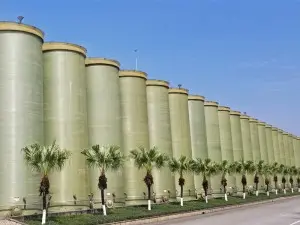
-
 Afrikaans
Afrikaans -
 Albanian
Albanian -
 Amharic
Amharic -
 Arabic
Arabic -
 Armenian
Armenian -
 Azerbaijani
Azerbaijani -
 Basque
Basque -
 Belarusian
Belarusian -
 Bengali
Bengali -
 Bosnian
Bosnian -
 Bulgarian
Bulgarian -
 Catalan
Catalan -
 Cebuano
Cebuano -
 China
China -
 China (Taiwan)
China (Taiwan) -
 Corsican
Corsican -
 Croatian
Croatian -
 Czech
Czech -
 Danish
Danish -
 Dutch
Dutch -
 English
English -
 Esperanto
Esperanto -
 Estonian
Estonian -
 Finnish
Finnish -
 French
French -
 Frisian
Frisian -
 Galician
Galician -
 Georgian
Georgian -
 German
German -
 Greek
Greek -
 Gujarati
Gujarati -
 Haitian Creole
Haitian Creole -
 hausa
hausa -
 hawaiian
hawaiian -
 Hebrew
Hebrew -
 Hindi
Hindi -
 Miao
Miao -
 Hungarian
Hungarian -
 Icelandic
Icelandic -
 igbo
igbo -
 Indonesian
Indonesian -
 irish
irish -
 Italian
Italian -
 Japanese
Japanese -
 Javanese
Javanese -
 Kannada
Kannada -
 kazakh
kazakh -
 Khmer
Khmer -
 Rwandese
Rwandese -
 Korean
Korean -
 Kurdish
Kurdish -
 Kyrgyz
Kyrgyz -
 Lao
Lao -
 Latin
Latin -
 Latvian
Latvian -
 Lithuanian
Lithuanian -
 Luxembourgish
Luxembourgish -
 Macedonian
Macedonian -
 Malgashi
Malgashi -
 Malay
Malay -
 Malayalam
Malayalam -
 Maltese
Maltese -
 Maori
Maori -
 Marathi
Marathi -
 Mongolian
Mongolian -
 Myanmar
Myanmar -
 Nepali
Nepali -
 Norwegian
Norwegian -
 Norwegian
Norwegian -
 Occitan
Occitan -
 Pashto
Pashto -
 Persian
Persian -
 Polish
Polish -
 Portuguese
Portuguese -
 Punjabi
Punjabi -
 Romanian
Romanian -
 Russian
Russian -
 Samoan
Samoan -
 Scottish Gaelic
Scottish Gaelic -
 Serbian
Serbian -
 Sesotho
Sesotho -
 Shona
Shona -
 Sindhi
Sindhi -
 Sinhala
Sinhala -
 Slovak
Slovak -
 Slovenian
Slovenian -
 Somali
Somali -
 Spanish
Spanish -
 Sundanese
Sundanese -
 Swahili
Swahili -
 Swedish
Swedish -
 Tagalog
Tagalog -
 Tajik
Tajik -
 Tamil
Tamil -
 Tatar
Tatar -
 Telugu
Telugu -
 Thai
Thai -
 Turkish
Turkish -
 Turkmen
Turkmen -
 Ukrainian
Ukrainian -
 Urdu
Urdu -
 Uighur
Uighur -
 Uzbek
Uzbek -
 Vietnamese
Vietnamese -
 Welsh
Welsh -
 Bantu
Bantu -
 Yiddish
Yiddish -
 Yoruba
Yoruba -
 Zulu
Zulu
High-Pressure Fiberglass Piping Systems | Durable & Efficient Solutions
High-Pressure Fiberglass Piping Systems An Overview
High-pressure fiberglass piping systems have emerged as a crucial innovation in various industrial applications, providing an effective solution for transporting fluids under high-pressure conditions. These systems are engineered to withstand extreme environments while offering numerous advantages over traditional piping materials such as steel or PVC. This article delves into the characteristics, advantages, applications, and future of high-pressure fiberglass piping systems.
Fiberglass, or fiber-reinforced plastic (FRP), consists of a matrix of thermosetting resins reinforced with glass fibers. This composite structure endows fiberglass with exceptional tensile strength and resistance to corrosive chemicals, making it suitable for high-pressure environments. Moreover, the lightweight nature of fiberglass reduces installation and transportation costs, allowing for considerable savings in large-scale projects.
One of the primary advantages of high-pressure fiberglass piping is its excellent resistance to corrosion and chemical attack. Industries that handle aggressive fluids, such as petrochemicals, wastewater treatment, and power generation, benefit significantly from this characteristic. Unlike traditional materials that may corrode or degrade over time, fiberglass maintains its integrity, ensuring long-lasting performance and reducing maintenance costs.
Additionally, high-pressure fiberglass piping systems exhibit superior thermal insulation properties. This feature is particularly beneficial in applications where temperature control is critical, such as in steam distribution or chemical processing. The ability to insulate effectively helps to conserve energy and enhance the efficiency of the system, leading to lower operational costs.
high-pressure fiberglass piping system

The flexibility of fiberglass piping systems allows for easier installation compared to rigid materials. Installation can often be completed faster due to the lightweight nature of fiberglass, which simplifies handling and reduces the need for heavy lifting equipment. Moreover, the flexible design enables the piping to accommodate thermal expansion and contraction, minimizing the risk of leaks and failures.
High-pressure fiberglass piping systems are widely used in various industries, including oil and gas, chemical processing, water treatment, and power generation. Their robustness makes them ideal for transporting aggressive fluids, while their durability ensures that they can withstand the rigors of high-pressure operations. As industries continue to seek ways to improve efficiency and reduce costs, fiberglass piping systems are becoming an increasingly popular choice.
Looking ahead, the future of high-pressure fiberglass piping systems appears promising. With advancements in material science and engineering techniques, the performance of these systems is expected to improve further. Innovations in manufacturing processes and the development of new resin formulations may enhance the strength and thermal properties of fiberglass, allowing for even higher pressures and temperatures.
In conclusion, high-pressure fiberglass piping systems represent a significant advancement in fluid transport technology. Their combination of lightweight, corrosion resistance, thermal insulation, and flexibility makes them an ideal choice for many industrial applications. As industries continue to evolve, the role of fiberglass piping systems is set to expand, ensuring efficient and safe fluid transport in challenging environments.
Latest news
-
Exploring the Benefits of Top Hammer Drifter Rods for Enhanced Drilling PerformanceNewsJun.10,2025
-
High-Precision Fiberglass Winding Machine for GRP/FRP Pipe Production – Reliable & Efficient SolutionsNewsJun.10,2025
-
FRP Pipes & Fittings for Shipbuilding - Corrosion-Resistant & LightweightNewsJun.09,2025
-
Premium FRP Flooring Solutions Durable & Slip-ResistantNewsJun.09,2025
-
Premium Fiberglass Rectangular Tanks Durable & Lightweight SolutionNewsJun.09,2025
-
Tapered Drill String Design Guide Durable Performance & UsesNewsJun.09,2025









